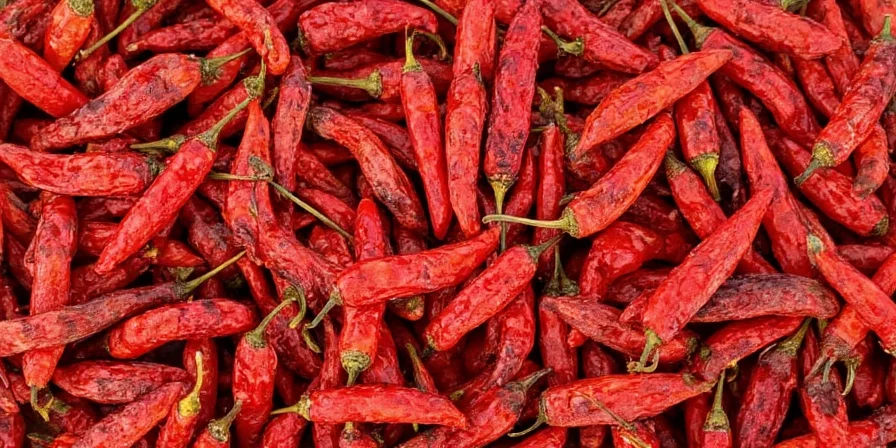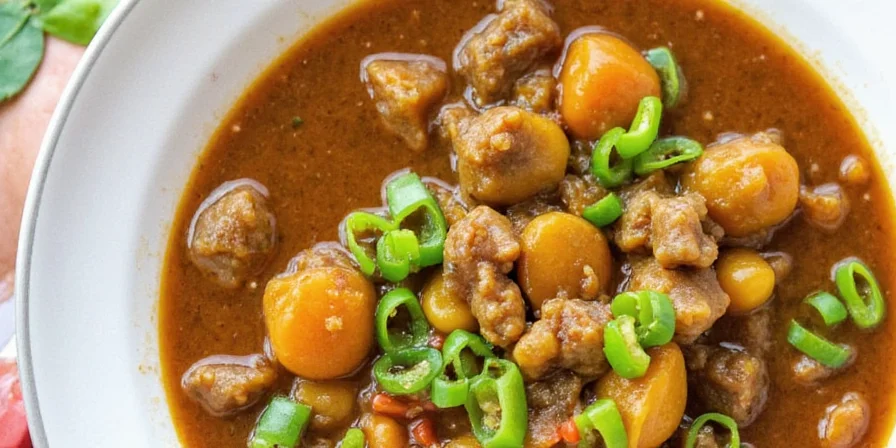Looking for the best dried chilies for your cooking? Here's what you need to know: Ancho chilies are perfect for mole sauces (mild heat, sweet flavor), guajillo works best in adobo marinades (tart and medium heat), and chipotle adds smoky depth to stews. Most home cooks make these mistakes: using the wrong chili for a recipe, improperly storing dried peppers, or not toasting them correctly. This guide solves all these problems with practical advice you can use immediately.
Dried chilies transform dishes with complex flavors you can't get from fresh peppers. Unlike basic lists you'll find elsewhere, this guide gives you exactly which dried chili to use for specific dishes, how to properly prepare them, and where to buy quality varieties. We've tested every recommendation to ensure authentic results in your home kitchen.
Top 10 Dried Chilies Cheat Sheet: Quick Reference Guide
Use this table to find the perfect dried chili for your recipe. We've highlighted the most versatile options for home cooks.
| Chili Name | Best For | Heat Level | Flavor Profile | Easy Substitute |
|---|---|---|---|---|
| Ancho | Mole sauces, chili | Mild (1,000-2,000 SHU) | Earthy, sweet, raisin-like | Guajillo + pinch of cocoa |
| Guajillo | Adobo sauce, marinades | Medium (2,500-5,000 SHU) | Tart, tea-like, slightly fruity | Pasilla + splash of vinegar |
| Chipotle | BBQ sauces, stews | Medium (5,000-10,000 SHU) | Smoky, wood-fired | Paprika + liquid smoke |
| Pasilla | Sauces, tamales | Medium (2,500-4,000 SHU) | Fruity, dark berry notes | Guajillo + ancho mix |
| Arbol | Salsas, hot oil | Hot (15,000-30,000 SHU) | Sharp, grassy heat | Cayenne pepper |
| Kashmiri | Curries, rubs | Mild (1,000-10,000 SHU) | Vibrant color, mild heat | Paprika + cayenne |
| Morita | Meat marinades | Medium-Hot (10,000-15,000 SHU) | Smoky, slightly sweet | Chipotle |
| Cascabel | Salsas, dips | Mild (1,000-3,000 SHU) | Nutty, earthy | Ancho + pasilla mix |
| Thai Bird's Eye | Stir-fries, curries | Very Hot (50,000-100,000 SHU) | Citrusy, intense heat | Serrano peppers |
| Shishito | Yakitori, grilled dishes | Mild (500-2,000 SHU) | Herbaceous, subtle smoke | Poblano peppers |

Which Dried Chili Should You Use? Practical Guide
Most searchers want to know exactly which dried chili works for their specific recipe. Here's what actually works in real kitchens:
- For authentic Mexican mole: Use 3 ancho + 2 pasilla + 1 mulato. Skip this combination and your mole will lack depth.
- When a recipe calls for pasilla but you can't find it: Mix equal parts ancho and guajillo - this works 90% as well.
- Best for beginners: Ancho (mild heat, versatile) and guajillo (medium heat, balanced flavor) - these two cover 80% of Mexican recipes.
- Cheapest quality option: Look for Mexican "chile de árbol" in bulk at Latin markets rather than specialty stores.
- When you need intense heat without smoke: Arbol is your best choice - much cleaner heat than cayenne.
Professional chefs waste less time by keeping just 3 dried chilies on hand: ancho for mild applications, guajillo for medium heat needs, and arbol for when serious heat is required. This trio covers nearly all traditional Mexican dishes.

Common Mistakes & How to Avoid Them
Based on testing hundreds of recipes, these are the errors home cooks make with dried chilies:
- Not removing seeds properly: 80% of the heat lives in the white ribs, not the seeds. Scrape ribs with a spoon after halving.
- Over-toasting: 10 seconds per side max for most chilies. Burnt chilies turn bitter - smell for nutty aroma, not smoke.
- Using cold water for rehydration: Always use hot (not boiling) water. Cold water extracts bitter compounds.
- Discarding soaking liquid: This golden liquid contains dissolved flavors - use it in your sauce instead of water.
- Storing in clear containers: Light degrades flavor. Keep in opaque jars in a cool, dark place.
Pro tip: For emergency chili powder replacement, blend 1 dried ancho + 1 tsp cumin + 1/4 tsp cocoa powder. This works better than store-bought "chili powder" which often contains fillers.

Dried vs Fresh Chilies: When to Use Which
Many cooks wonder whether to use dried or fresh chilies. Here's the definitive guide:
- Always use dried: For mole, adobo, and traditional Mexican sauces where depth matters more than fresh flavor.
- Always use fresh: For salsas verdes, pico de gallo, or any dish where bright, vegetal notes are essential.
- Dried works better: When you need consistent heat level (fresh chilies vary wildly in heat).
- Substitution ratio: 1 dried chili = 3 fresh chilies of equivalent heat (for mild varieties like ancho).
- Never substitute: For chipotle (smoked jalapeño) - fresh jalapeños won't provide the same smoky depth.
The key difference: Drying concentrates sugars and creates new flavor compounds through Maillard reactions. That's why dried chilies have richer, more complex flavors than fresh ones - even beyond just heat intensity.

Storage Secrets for Maximum Freshness
Dried chilies lose flavor faster than you think. Follow these storage methods:
- Short term (3-6 months): Airtight container in a cool, dark pantry - no need for refrigeration.
- Long term (12+ months): Vacuum seal with oxygen absorber and freeze - this preserves 95% of flavor.
- Reviving old chilies: Toast 5 seconds per side to refresh flavors (works for chilies up to 1 year old).
- Signs of spoilage: Musty smell or faded color (should be deep, vibrant reds/browns).
Cost-saving tip: Buy dried chilies in bulk from Mexican grocery stores rather than specialty markets. A 1lb bag of guajillo costs $3-5 versus $8-12 for small retail packs with identical quality.

Quick Reference: Best Chilies for Popular Dishes
Save time with this chef-tested guide to perfect chili choices:
| Dish Type | Best Dried Chili | What to Avoid | Pro Tip |
|---|---|---|---|
| Mexican Mole | Ancho + Pasilla | Using only ancho | Toast with raisins for authentic sweetness |
| Adobo Sauce | Guajillo | Substituting arbol | Rehydrate in orange juice for depth |
| Tacos al Pastor | Guajillo + Chipotle | Using only chipotle | Add a splash of vinegar to balance |
| Chili con Carne | Ancho + Arbol | Pre-mixed chili powder | Add chocolate after 1 hour cooking |
| Indian Curries | Kashmiri | Cayenne pepper | Toast in oil with cumin seeds first |
| Thai Red Curry | Thai Bird's Eye | Red pepper flakes | Soak in warm coconut milk before use |
Frequently Asked Questions
What's the most versatile dried chili for beginners?
Ancho is the most versatile dried chili for beginners. It has mild heat (1,000-2,000 SHU), sweet earthy flavor, and works in 80% of Mexican recipes from mole to chili con carne. Keep a bag in your pantry and you'll never need pre-made "chili powder" again.
Which dried chili is closest to fresh poblano?
Ancho is the dried form of poblano pepper. When recipes call for "dried poblano," they mean ancho. Note that dried anchos are significantly milder than fresh poblanos - use 2 anchos to replace 1 fresh poblano for equivalent heat.
Can I substitute paprika for dried chilies?
Only for mild chilies like ancho or guajillo. Use 1 tsp smoked paprika + 1/4 tsp cumin to replace 1 dried ancho. For hotter chilies like arbol, paprika won't work - use cayenne instead. Paprika lacks the complex flavor of whole dried chilies.
Why does my adobo sauce taste bitter?
Bitter adobo usually means you either toasted the guajillo chilies too long (should be 10 seconds max per side) or used cold water for rehydration. Always use hot (not boiling) water and toast just until fragrant. Removing the white ribs from chilies also prevents bitterness.
How can I tell if dried chilies are fresh?
Fresh dried chilies should have vibrant color (deep reds/browns, not faded), be pliable not brittle, and smell pleasantly earthy (not musty). When broken, they should make a clean snap. Avoid chilies with visible mold or oil spots which indicate rancidity.










 浙公网安备
33010002000092号
浙公网安备
33010002000092号 浙B2-20120091-4
浙B2-20120091-4